When vaping became popular in the 2010s, it was primarily marketed as a safer alternative to smoking cigarettes and other tobacco products. In fact, some companies even marketed it as a ‘quit smoking aid.’
But just because something is safer, doesn’t mean that it’s safe.
And that’s the case with vaping.
RELATED: I’m Pregnant and Trying to Quit Vaping: Any Advice?
It’s like driving down a one-way, the wrong way. It doesn’t matter how safe or protective your vehicle is – it’s still dangerous and you’re chances of getting in an accident are high. There’s no other way around it.
While vaping is, in fact, safer than cigarettes in most cases, a growing body of evidence suggests that it poses significant health risks, especially to the developing bodies and brains of children and adolescents.
If your child is vaping or thinking about vaping, helping them understand those dangers could help deter them from further damaging their short-term and long-term health. Don’t worry – we’re here to help!
What Is Vaping & Why Is It Dangerous?
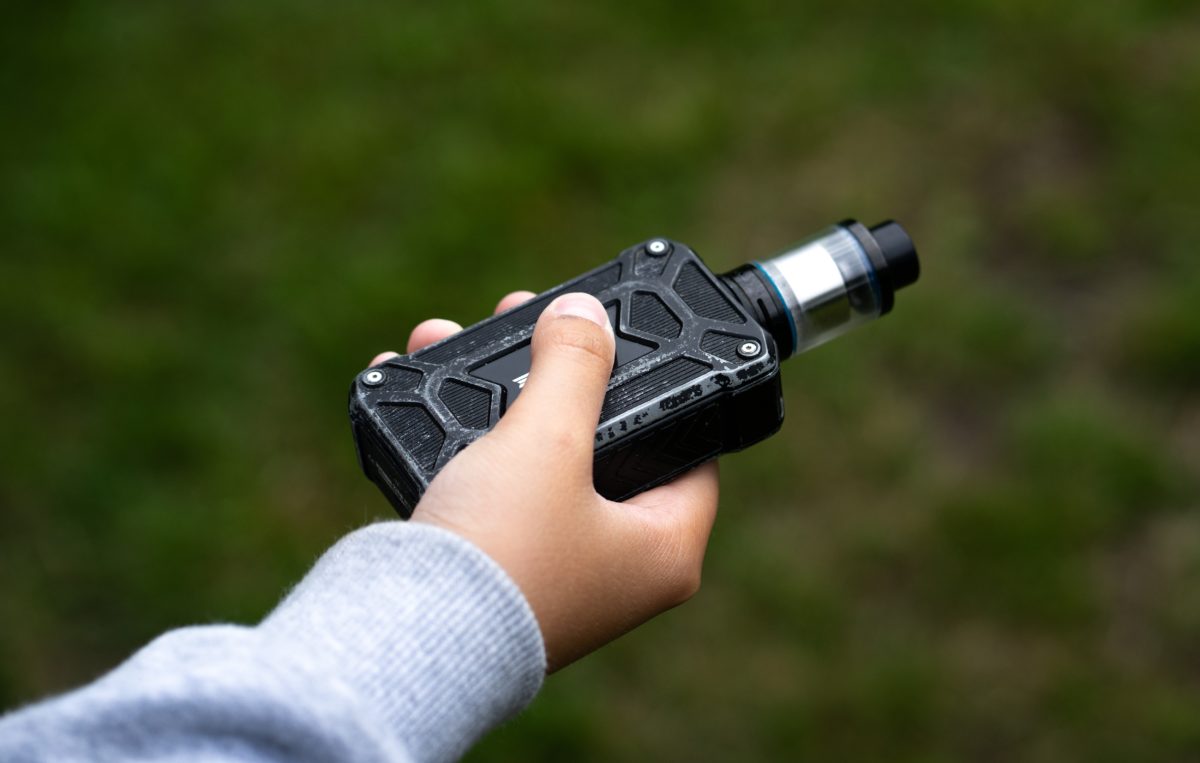
Understanding the dangers of vaping often begins with understanding what vaping is, and how it works.
The anatomy of a vape can be divided into three parts: the battery, the atomizer, and the e-liquid. The battery heats the atomizer, which converts the e-liquid into tiny airborne droplets, also known as aerosol.
Instead of inhaling smoke (like a cigarette), vape users are inhaling aerosol (water vapor). This is why many people consider vaping a safer alternative to smoking cigarettes, but there’s one small problem:
Kids aren’t just inhaling water vapor when they vape.
That’s because the e-liquid kids are using these days is often laced with dozens of dangerous chemicals that eventually find their way into the child’s lungs and bloodstream, where they wreak havoc on the body.
Nicotine, flavorings (such as diacetyl), volatile organic compounds, heavy metals (such as nickel, tin, and lead), aldehydes, tobacco alkaloids, phenolic compounds, glycerol, and TSNAs – the list goes on.
To make matters worse, e-liquids on the market today are flavored to attract a younger demographic.
And it’s working.
According to the Centers for Disease Control and Prevention (CDC), more than 2.1 million middle and high school students reported vaping at least once per month in the United States in 2023.
Of course, that number is supposedly much higher, as many kids hide or lie about their vape use. Even if that number were down to just one child, that’s still one child too many – and something must be done.
What Are the Health Dangers of Vaping?
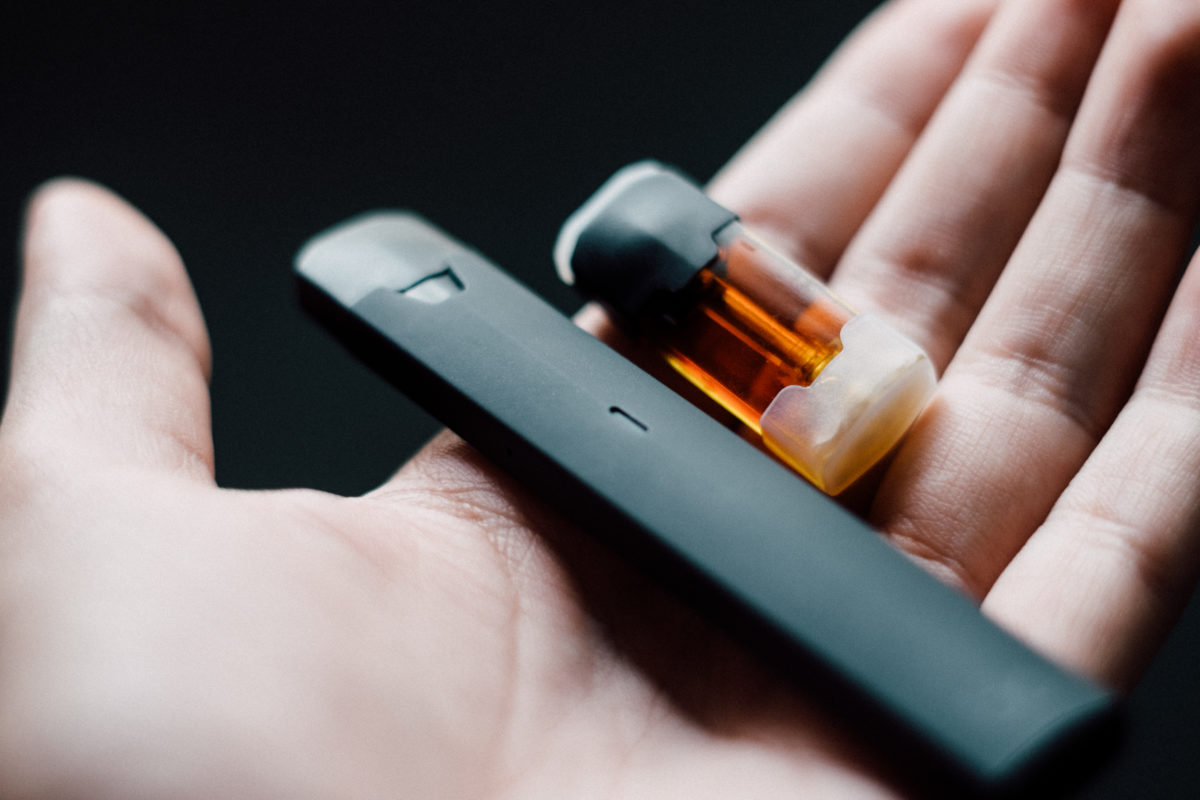
Vaping can have a negative impact on your child’s life in a variety of ways. The severity of that impact will depend on what chemicals they’re inhaling, how often they’re vaping, and how much they vape at once.
With that said, any amount of vaping is dangerous – and should be avoided at all costs.
Here are five reasons why!
5. Addiction & Dependence
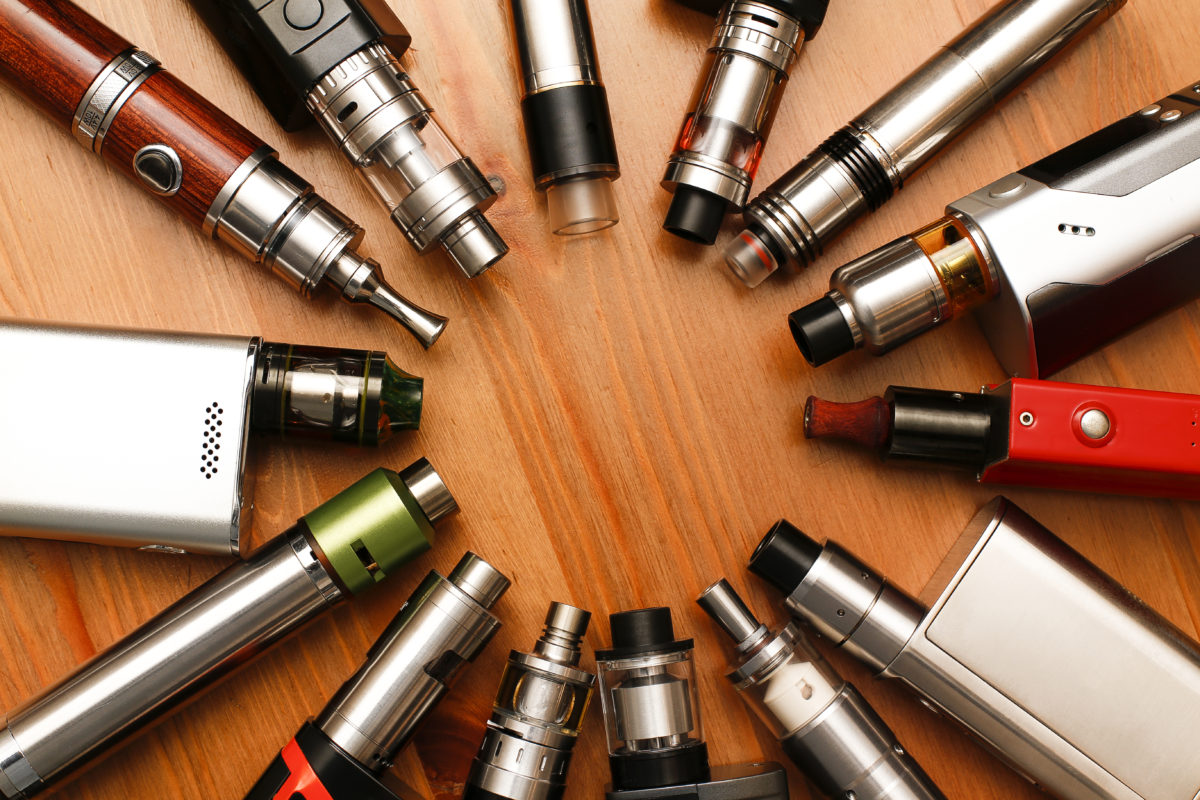
A CDC study found that 99% of e-cigarettes sold in the United States today contain at least some amount of nicotine – and some of those e-cigarettes failed to disclose that their product contained nicotine.
In fact, even some that were marketed as nicotine-free have been found to contain nicotine.
Nicotine triggers the release of dopamine, which alters our brain’s reward system – creating a sense of euphoria and relaxation. The more your child inhales nicotine, the more likely they are to continue.
“Adolescents don’t think they will get addicted to nicotine, but when they do want to stop, they find it’s very difficult,” says Yale neuroscientist Marina Picciotto, Ph.D. – adding that the ‘adolescent brain is more sensitive to rewards.’ This vulnerability results in an increased risk of developing an addiction to vaping.
4. Brain Development
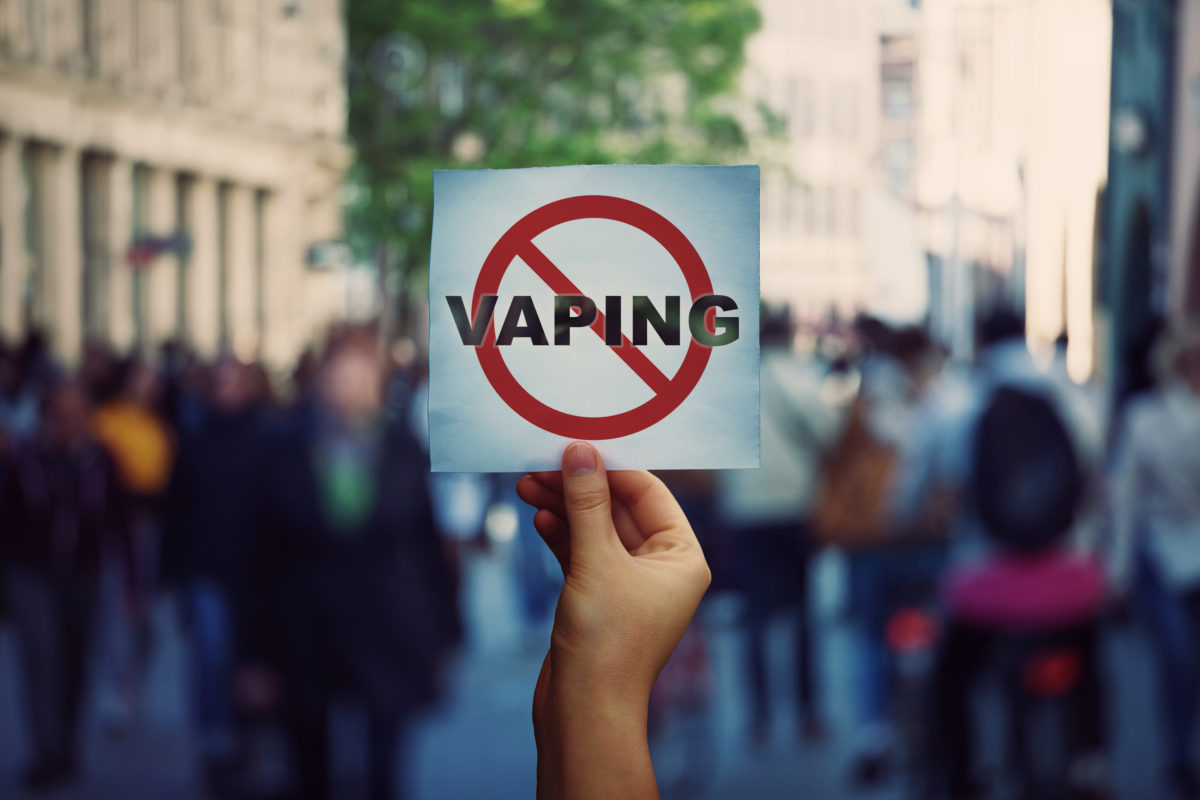
The brain doesn’t stop developing until about age 25, but vaping (and nicotine, in general) has a way of harming the parts of the brain that control attention, learning, mood, impulse control, and so much more.
Attention: One study in 2019 found a correlation between vaping and ADHD symptoms, and also found a link between nicotine addiction and anxiety. Many young people who vape report difficulty concentrating.
Learning: A teenager’s brain builds synapses (connections between brain cells) at a faster rate than an adult’s brain, but nicotine can change the way these synapses are formed – halting the learning process.
Mood: Several studies over the past decade have found a link between e-cigarette use and depression – and not just the development of depression, but also the worsening of the disease with continued use.
Impulse Control: Nicotine can harm the prefrontal cortex of a teenager’s brain, which reduces impulse control, alters neurotransmitter activity, and disrupts the formation of critical decision-making pathways.
According to the CDC, “The most common reason youth give for continuing to use e-cigarettes is ‘I am feeling anxious, stressed, or depressed.’” As for why they started, friends were often the biggest culprit.
3. Lung Damage & Heart Disease

One of the most common flavorings found in e-liquids, diacetyl, has been linked to popcorn lung, also known as bronchiolitis obliterans (BO) – inflammation of the lungs that may cause breathing problems.
“Over time, it can lead to scarring of the lungs’ tiny air sacs, along with thickening and narrowing of the airways,” writes Harvard Health. They also warn of a disease called EVALI (e-cigarette, or vaping, product use-associated lung injury), which has been linked to certain THC-containing e-cigarettes available today.
Not only that, but vaping can affect heart health, as well!
In 2022, the American Heart Association released a statement in the AHA Journals linking vape use in childhood to cardiovascular disease – increasing the risk of heart attack and stroke in young people.
Vaping can also cause arterial stiffness, high blood pressure, hyperinflammatory response, blood clots, respiratory distress syndrome, increased heart rate, adrenaline release, and other breathing problems.
2. Increased Risk of Cancer

Since most vapes and other electronic nicotine delivery systems (ENDS) don’t contain tobacco – the leading preventable cause of cancer – many young people assume vapes aren’t cancer-causing.
But don’t be fooled – some e-liquids do, in fact, contain cancer-causing chemicals.
While no human cancer associated with vaping has been reported thus far, that’s not to say it doesn’t increase your risk – especially since scientists still have so much to learn about vaping and cancer.
“The effects aren’t really known and some of these epidemiological facts can take decades to really be noticed. We don’t have a great evidence basis because people haven’t been using these heavily for decades yet,” says Edwin Ostrin, M.D., Ph.D. – who worries about what the future holds for vape users.
1. Use of Tobacco-Containing Products
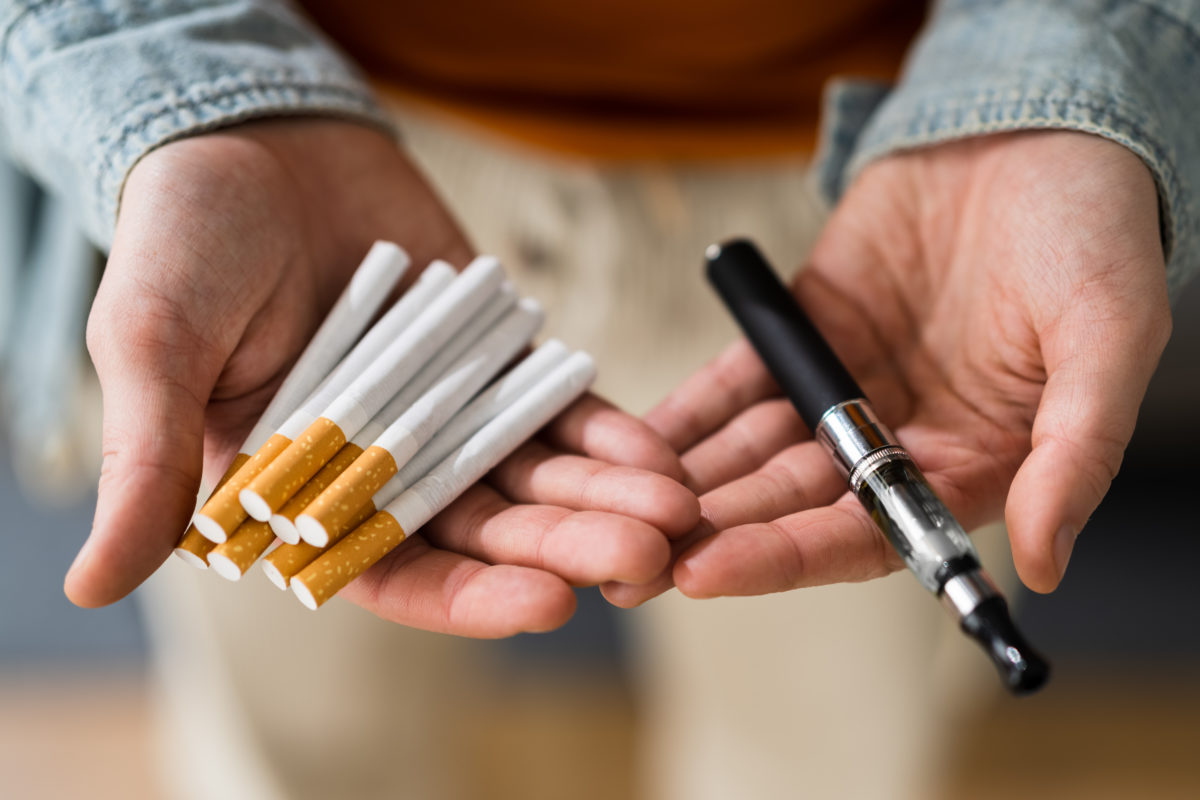
There’s an overwhelming amount of research suggesting that vaping serves as an introductory product for preteens and teens who transition to other nicotine products, some of which may contain tobacco.
One study showed that high school students are seven times more likely to start smoking cigarettes after just six months of vaping. Another study found that those who used e-cigarettes smoked more cigarettes than those who didn’t – with plenty of other studies suggesting vape use often leads to cigarette use.
So, while vaping is dangerous in its own right, it also acts as a bridge to other, more dangerous products. That’s why it’s so important to discourage its use as early as possible – it could save your child’s life!
What Should Parents Do If They Catch Their Child Vaping?
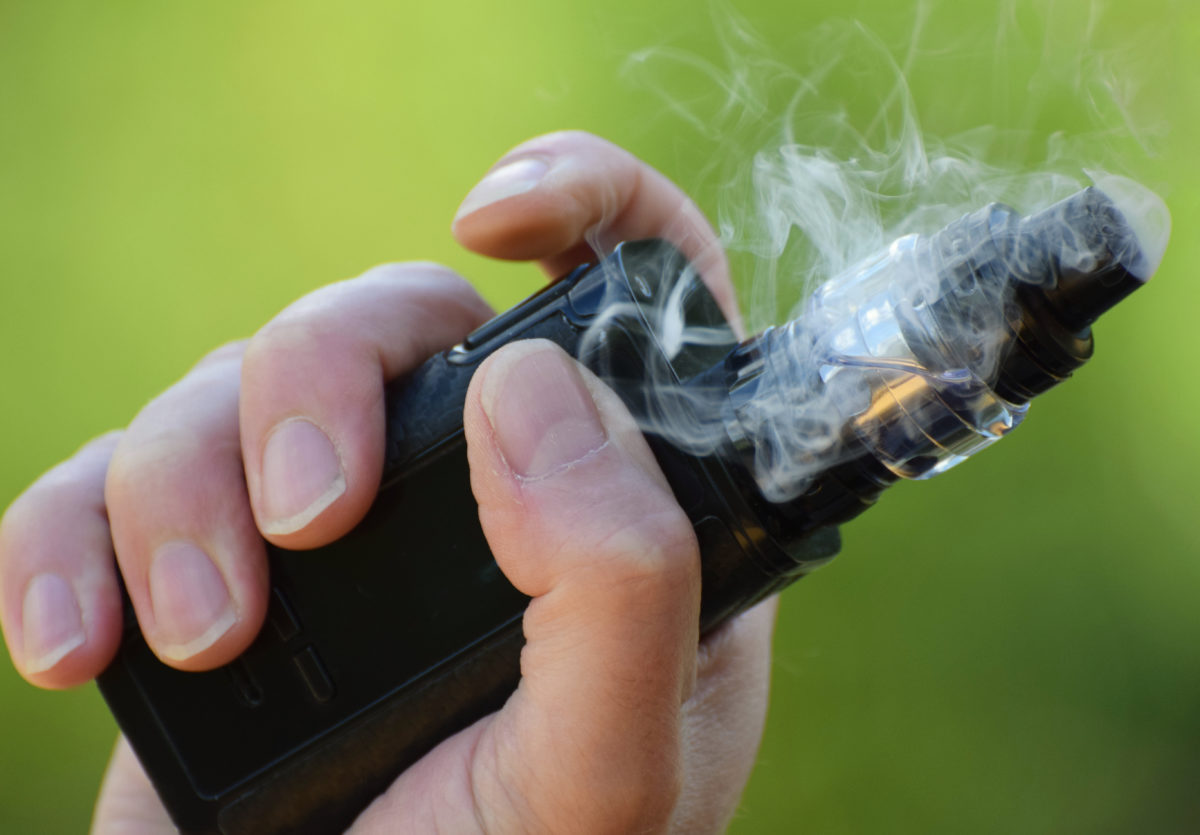
Picture this: You’re going through your child’s laundry when you find a vape hidden in their coat pocket. Or even worse: You get a phone call from the police because your child got caught vaping with friends.
Maybe you had an indication of vape use before this, and maybe you didn’t – either way, you’re bound to be a little shocked when it becomes a reality. And it’s normal to be a little lost when/if that day comes.
In fact, that’s exactly what happened with one of our anonymous readers a few days ago.
“What would you do if [you] caught your teen with a vape? I found one when doing laundry…” the reader asked our MamasUncut community. The answers prove we all have different ways of going about it.
Several people said they would be disappointed, but at least a little relieved that it wasn’t something worse – such as alcohol, drugs, or cigarettes. On the other hand, one user likened it to finding alcohol – arguing that vaping is illegal for anyone under 21, just like alcohol. Either way, it needs to be dealt with.
So, what would you do if you caught your teen with a vape?
Handling the discovery of your teen vaping with empathy, support, and clear communication can help navigate them away from its use and towards healthier choices. Here are five things you can do to help.
5. Understand the Vaping Laws In Your State
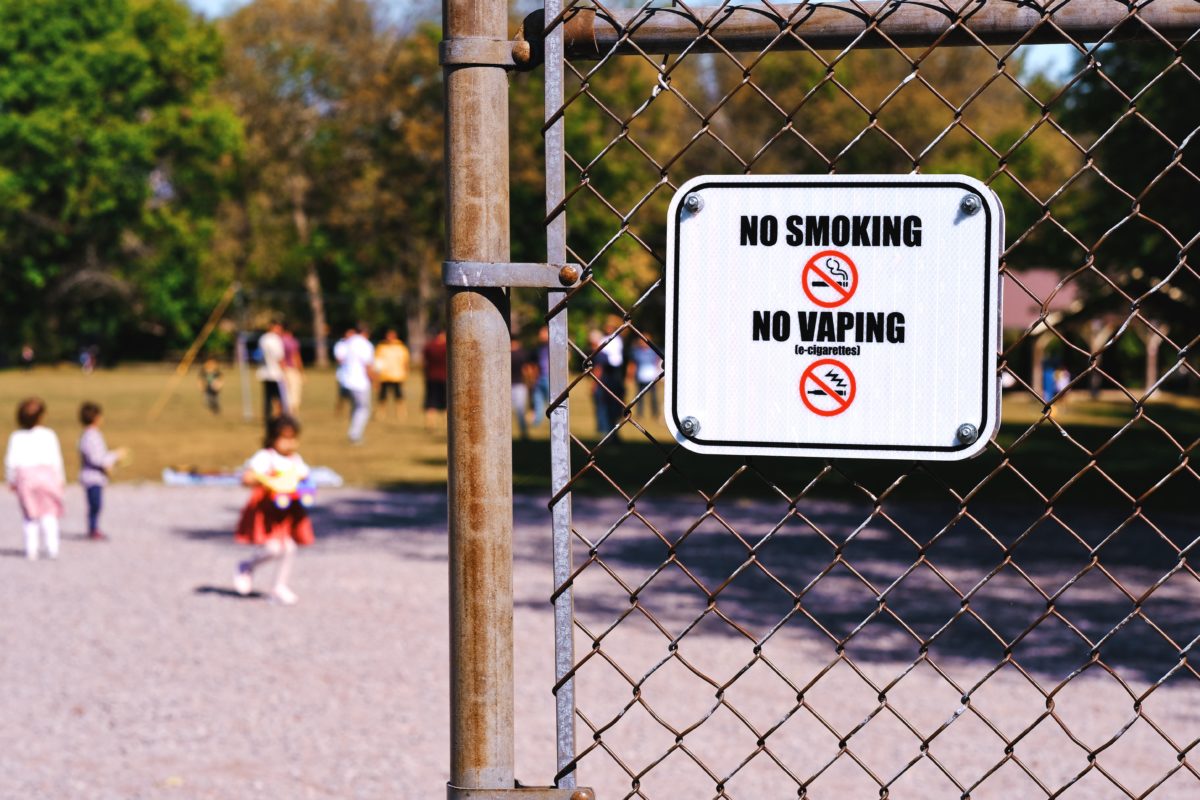
In December 2019, former President Donald Trump amended the Federal Food, Drug, and Cosmetic Act – effectively raising the federal minimum age for the sale of tobacco products from 18 to 21 years old.
The amendment was dubbed ‘Tobacco 21.’
While vapes don’t contain tobacco, they do contain nicotine – which comes from tobacco. For this reason, vapes are considered tobacco products and, therefore, are prohibited to anyone under the age of 21.
Yes, that means it’s illegal for your teen to have one.
If you find out your teenager has been vaping, make sure you familiarize yourself with the federal and state laws – that way, you can relay that information to your child. They might not know what’s at stake!
4. Understand the Health Dangers of Vaping
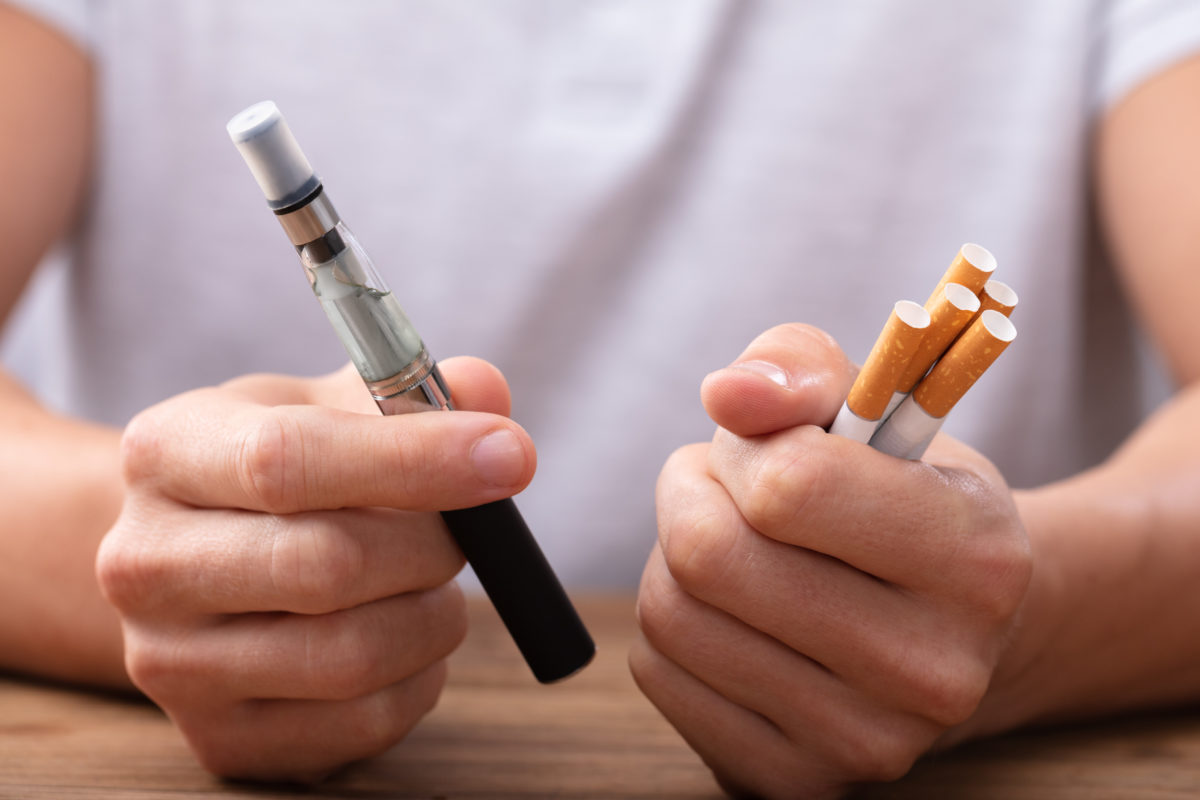
If you haven’t already, familiarize yourself with the health dangers of vaping. Again, your child might not know how dangerous it is, but we can help them understand in a constructive and positive manner.
And don’t just study the dangers or risks – understand the warning signs, as well!
Some of the most common signs of vape use in teens and preteens include random fruity scents lingering aerosol clouds, secretive behavior, frequent coughing, irritability, mood swings, nosebleeds, and thirst.
By being your child’s best advocate, you can help them stay nicotine-free!
That means being actively involved in your child’s life from an early age, maintaining open lines of communication, and educating them (and yourself) about the risks associated with nicotine and vaping.
3. Have an Honest Conversation With Your Child

Once you, as the parent, have a better understanding of the health and legal dangers of vaping, it’s time to have an honest and open conversation with your child – all in an effort to promote healthier life choices.
To do that, they’ll need a non-judgmental space where they feel comfortable sharing their thoughts. If you approach the conversation like a lecture, you’ll never get through to your teen, and might make it worse.
Instead, approach the conversation with empathy, acknowledge that vaping has become a common trend among teens in today’s society, and express your concerns – without resorting to fear tactics or blame.
Remember, this is a conversation, so let your child contribute. Let them ask questions and make sure you listen to what they’re saying. They have a right to be heard, but many teens often feel like they’re not.
2. Be The Change You Wish To See In Your Child
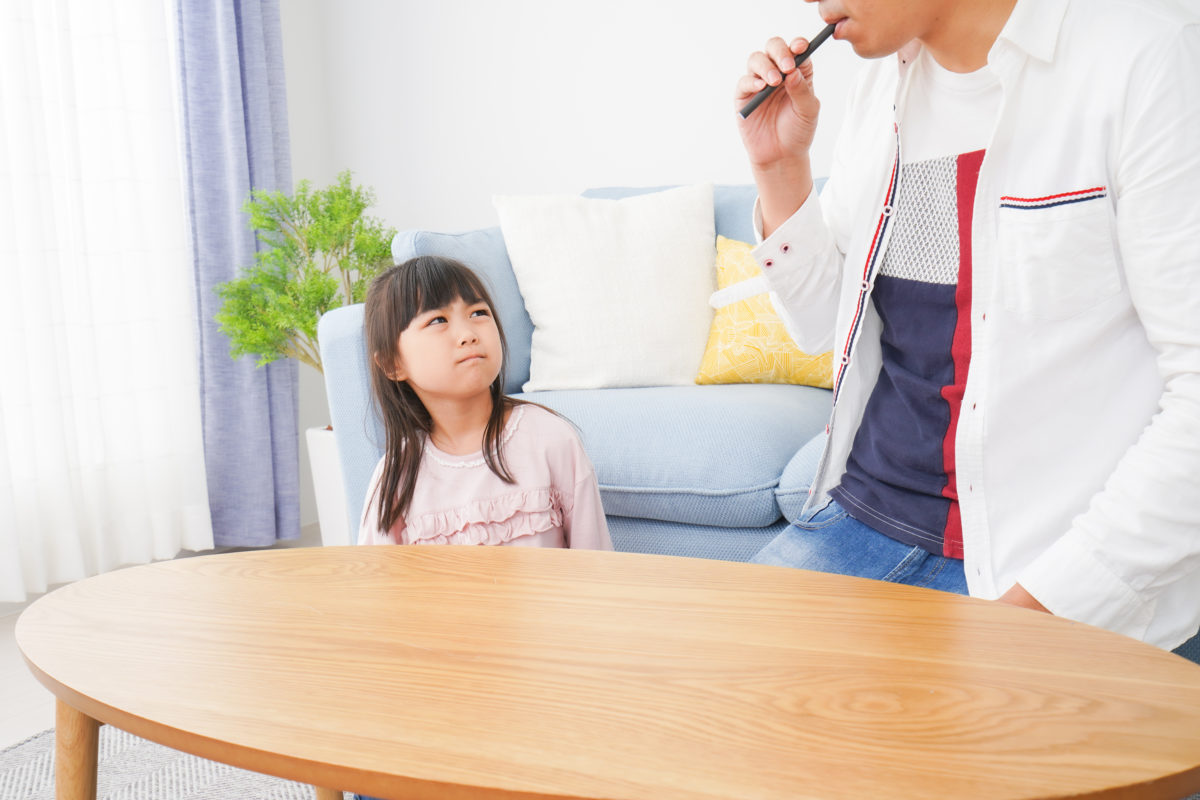
Teenagers are highly observant and often model their behavior after their parents. If they see their parent vaping and/or smoking cigarettes, they’re more likely to want to vape themselves – and they’ll find a way.
Likewise, if they see their parents engaging in healthy habits and steering clear of nicotine and/or tobacco products (including vaping), they’re more likely to adopt similar attitudes and behaviors in their own lives.
Leading by example not only shows your child the way to a healthy lifestyle but also builds a sense of trust and communication between child and parent, which means they’re more likely to come to you in the future when they need help with something. The earlier you foster this relationship, the better off you’ll be!
1. Speak With Their Doctor or Healthcare Provider

If the things you’re saying aren’t quite getting through to your child, then it might be time to get their doctor or healthcare provider involved – whether that be directly or indirectly is completely up to you, of course.
Some parents might want to ask the doctor for advice on how to discourage the use of vapes in and around the home, while other parents might want the doctor to take the lead in that area. What’s most important is that your child has a support system looking out for their best interests at all times of the day.
By framing this interaction as an opportunity for learning and personal growth, rather than a punitive measure, parents can create a supportive environment that encourages their children to take their health seriously and feel more comfortable seeking professional guidance on important issues like vaping.
How to Help Your Child Quit Vaping
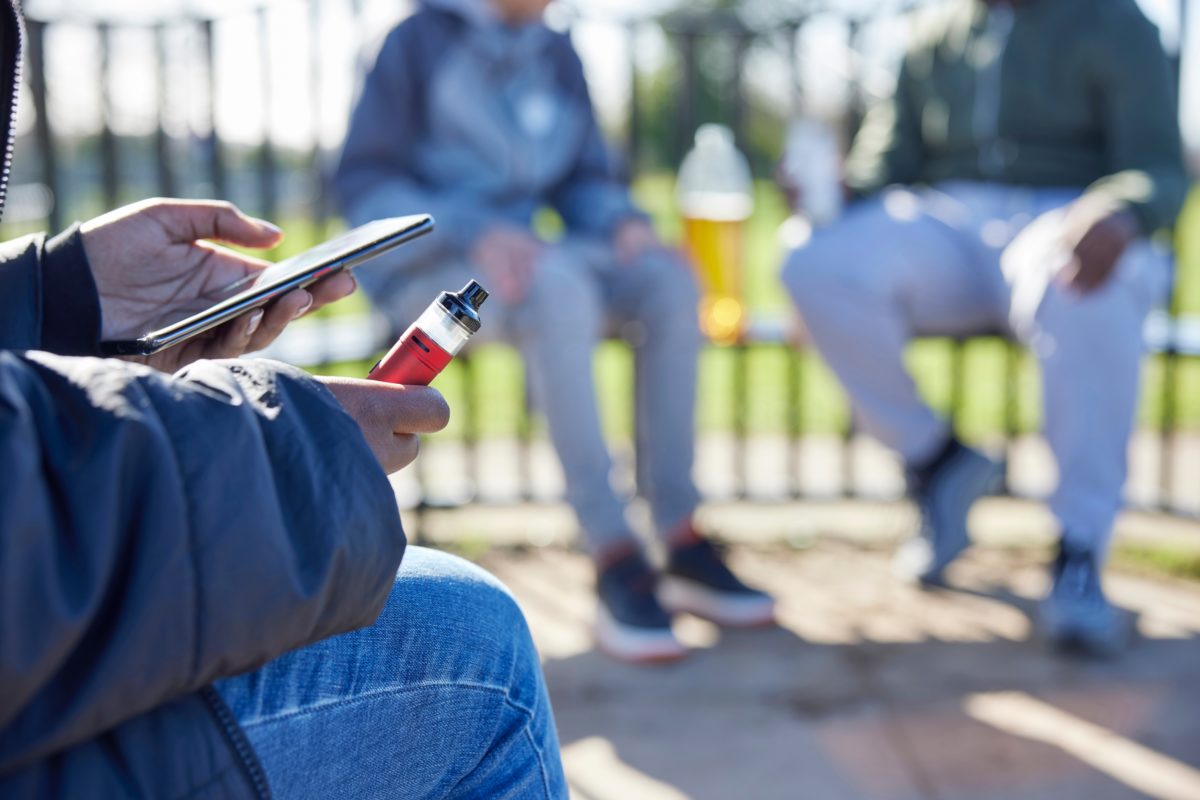
They say the best time to plant a tree was 20 years ago, but the second-best time is right now. I like to have that same attitude when it comes to quitting bad behaviors, and vaping falls into that category.
The best time to quit vaping was the very moment you started, but the second-best time is right now.
While most parents understand this, the same can’t be said about teenagers. They either don’t know how damaging it is to their health or simply don’t care about the damage it’s causing – it’s quite heartbreaking.
Here are five things parents can do to help their child quit vaping – that way, you can both put this dangerous phase behind you, and continue to move toward a healthier, and happier day-to-day lifestyle.
5. Prepare for Withdrawal Symptoms

Withdrawal symptoms are the No. 1 reason why teenagers (and people, in general) have a hard time quitting nicotine products (such as vapes). In fact, they tend to give teenagers every reason not to quit.
So, what are the withdrawal symptoms of vaping?
Some of the most common withdrawal symptoms include temptations, cravings, irritability, feeling jumpy or restless, difficulty staying focused, having a hard time sleeping, anxiety, depression, and excess stress.
If your child experiences any of these symptoms, they’re likely to start smoking again.
Knowing what to expect can help your child feel more prepared and less alarmed when symptoms arise – which is why it’s so important to have an open and honest conversation with them as soon as possible.
4. Replace Vaping With New Hobby

One of the best ways to encourage your child to quit vaping is by introducing them to a healthier hobby that can help fill the void that’s left when they finally remove nicotine from their day-to-day lifestyle.
It doesn’t matter what that hobby is, as long as it’s something they enjoy.
It could be a new sport, learning a new language, brushing up on a new skill, exercising or spending time in the gym, volunteering, gardening, meditating, or anything else that doesn’t involve harmful chemicals.
You should also take notice of why they started vaping.
Part of replacing vaping with a new hobby is avoiding the reasons (or triggers) why you vape in the first place. If peer pressure plays a role in your child’s vaping habits, it might be time to find a new crowd.
3. Create a Quit Plan & Set Real Goals

For kids looking to break free from the dangers of vaping, a tailored ‘quit plan’ offers more than just a series of steps – it provides a personalized strategy that acknowledges the unique challenges they face.
It helps lay the foundation for everything that follows – it’s the blueprint!
All ‘quit plans’ start with a quit date – whether that be right this moment, tomorrow morning when they wake up, or next week. It’s important that it’s soon enough, but not so soon that they grow overwhelmed.
Think of the quit plan as a compass – guiding your child through the process.
2. Make Use of Local Resources & Initiatives

There is a wide range of local resources, helplines, and initiatives designed to give your child the support they need while quitting vaping. Taking advantage of these resources goes a long way for your child.
Whether through their school, doctor, local, state, or federal health department, community center, library, online, non-profit organization, or via the phone, support is easy to find when you know where to look!
For immediate assistance, you can direct your teenager to contact 1-800-QUIT-NOW (1-800-784-8669) for those who speak English and 1-855-DEJELO-YA (1-855-335-3569) for those who speak Spanish.
1. What If They Don’t Want to Quit?
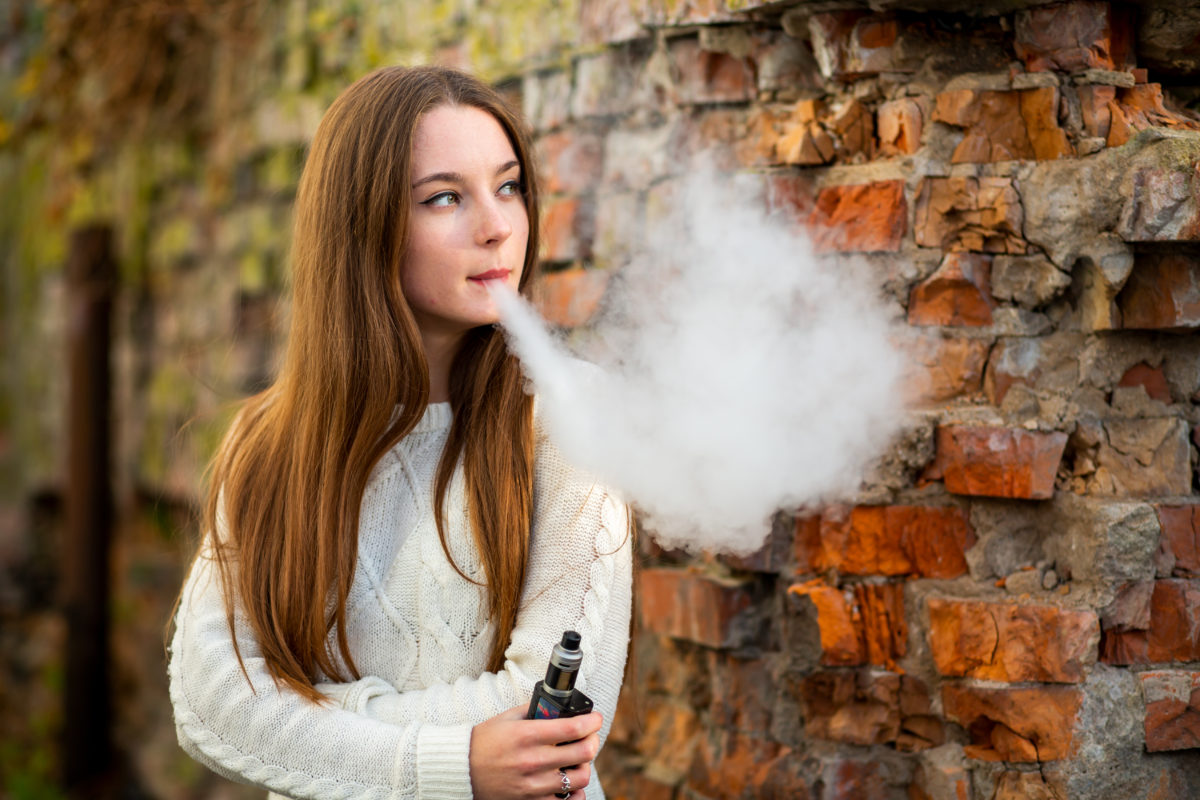
Discovering that your child does not want to quit vaping can be a challenging and disheartening situation for any parent, but it’s important to remember – it’s not about how you feel, it’s about how they feel.
First and foremost, don’t punish them – it isn’t always their fault, and they don’t always know better.
If your child is worried about the withdrawal symptoms, help them understand that it’s only temporary and those symptoms will eventually pass. If they’re worried about what their friends will think, help them understand that there are much cooler things out there that don’t have a negative effect on their health.
YOU MAY ALSO LIKE: Texas Teenager Reportedly Becomes the Youngest Person to Die of Vaping-Related Lung Illness
At the end of the day, help your child understand that there’s more to life than vaping – just make sure you’re by their side every step of the way!
Contents
Mamas Uncut is THE online place for moms. We cover the latest about motherhood, parenting, and entertainment as well – all with a mom-focused twist. So if you're looking for parenting advice from real parents, we have plenty of it, all for moms from moms, and also experts. Because, at the end of the day, our mission is focused solely on empowering moms and moms-to-be with the knowledge and answers they’re looking for in one safe space.
